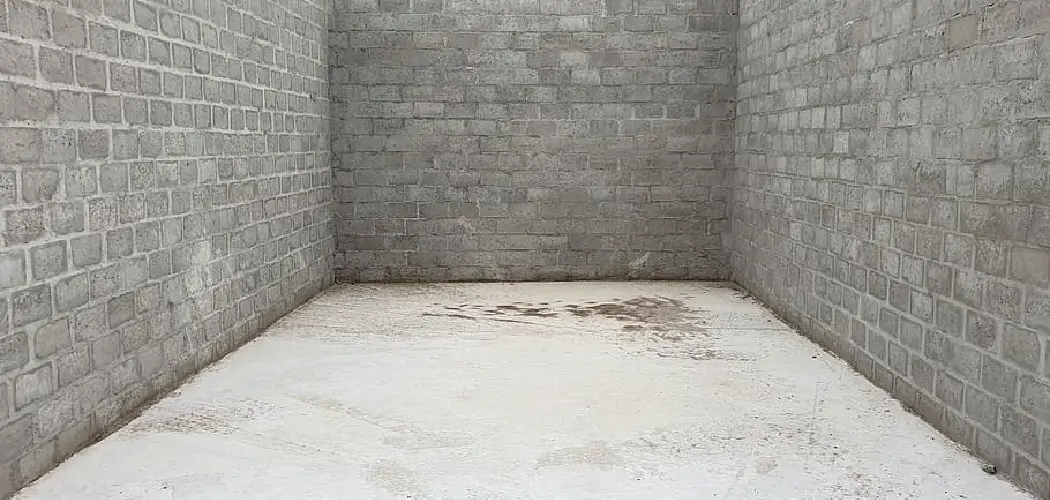Are you dealing with efflorescence on your basement floor? If so, it can be a real nuisance to remove. It starts as a white powder that coats the surface and can eventually cause paint and other sealants to peel off your walls and floors. It’s important not just for aesthetics but for safety reasons to get rid of efflorescence quickly and effectively in order to maintain the integrity of your basement flooring.
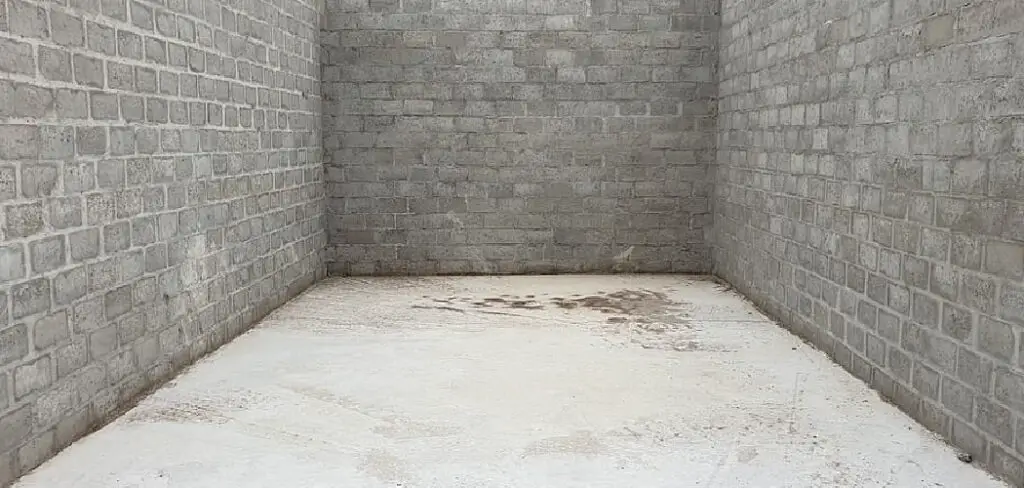
In this blog post, we’ll explain what causes efflorescence and how to stop efflorescence on basement floor while eliminating any existing white powdery stains that may already be present. Keep reading if you want to gain insight into what steps are necessary when tackling efflorescence!
7 Best Ways to Follow on How to Stop Efflorescence on Basement Floor
1. Dry the Floor:
The first step to eliminating efflorescence is to make sure your basement floor is dry, and no water seeps through it. Use a dehumidifier or other similar device to draw out any moisture from beneath the surface that could be causing the white powdery substance to form. If you dry the floor, it will not only prevent new efflorescence from forming but also help eliminate existing spots.
2. Seal Up Any Cracks:
If you have any cracks or crevices in your basement floors, they can easily let moisture pass through. To avoid this, use a concrete sealer to fill in gaps and prevent more water from seeping underneath the surface. Sealing up any cracks will help stop efflorescence from forming and make the floor more durable in the long run.
3. Use a Waterproofing Paint:
Another great way to keep your basement floors dry and free of efflorescence is by applying waterproofing paint. This will form an additional barrier between any moisture that could be seeping through the cracks and your basement floor, thus preventing more efflorescence from forming.
4. Invest in a Sub-Floor Membrane:
A subfloor membrane is an excellent way to keep moisture from your basement floor. This membrane is installed between the concrete and any coating that you add to the surface, such as tile or carpeting. It will act as a barrier between dampness and your basement floor, so you don’t have to worry about efflorescence forming.
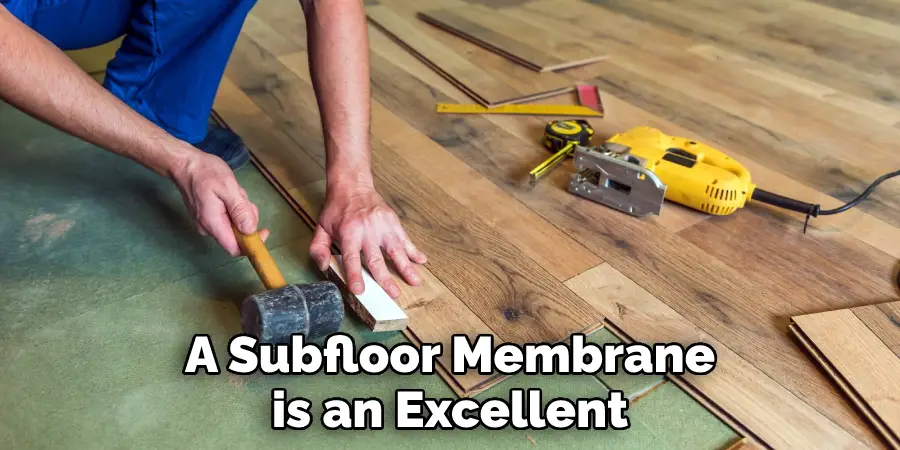
5. Make Sure Your Gutters Are Clean and Clear:
If your gutters are blocked or not draining properly, this can cause water to pool around the foundation of your home. This water can then work its way through any cracks in the basement floor and add to any existing efflorescence problem. Ensure your gutters are clean and clear to prevent additional water from seeping through the floor.
6. Apply a Cementitious Coating:
If you want an extra layer of protection against efflorescence, apply a cementitious coating before adding any other type of finish to your basement floors. This coating will act as a barrier between any moisture that is present beneath the surface and your floors so that even if water does make it through the cracks, it won’t cause efflorescence to form.
7. Ventilate Your Basement:
If you have an unfinished basement, be sure to install a few fans to help ventilate the area and keep moisture and humidity levels down. This will also help you tackle any existing efflorescence issues by allowing the basement floor to dry out faster.
Following these seven steps should help you eliminate any issues with efflorescence on your basement floors while preventing new white powdery stains from forming in the future. Just remember to keep your basement floors dry, seal up any cracks, invest in a waterproofing paint and sub-floor membrane, clean and clear your gutters, apply a cementitious coating, and ventilate your basement as needed for optimal efflorescence removal results!
Additional Tips and Tricks to Stop Efflorescence on Basement Floor
- Regularly vacuum and mop the basement floor to reduce dust and dirt, which can help promote efflorescence growth.
- Seal any cracks or gaps in the concrete, as these can allow moisture to penetrate into the floor and feed the growth of efflorescence.
- Make sure gutters and downspouts are free of debris and in working order, as this can help prevent water from seeping into the basement floor.
- Fix any leaking pipes or plumbing fixtures to stop moisture build-up on the basement floor.
- Ensure proper ventilation of the basement space, which will help reduce humidity levels and the likelihood of efflorescence growth.
- Check your basement walls for any signs of water damage, as this can be an indication of a more serious problem that needs to be addressed.
- Consider installing a dehumidifier in the basement to help reduce moisture levels and discourage efflorescence growth.
- If possible, install an interior waterproofing system that can help keep your basement dry and prevent efflorescence from forming.
- Make sure all crawl spaces or attic vents are open and functioning correctly, as this will help promote air circulation in the basement and reduce moisture build-up.
- If these tips still don’t stop efflorescence from forming on your basement floor, you may need to call a professional who can diagnose the problem and recommend solutions. This could include installing a drainage system, repairing cracks and leaks, or applying waterproofing solutions.
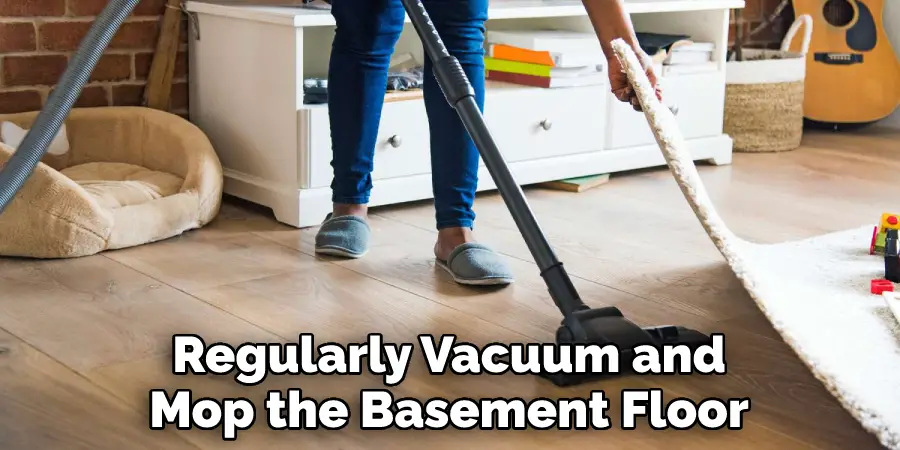
Regardless of the solution needed, it’s important to take action as soon as possible to avoid more serious damage from occurring. Taking these steps will help ensure your basement floor remains in good condition for many years to come.
How Can I Remove Efflorescence From the Basement Floor?
Removing efflorescence from the basement floor can be difficult without knowing the proper steps to take. To get rid of the growth, you need first to identify the source of moisture and fix it since efflorescence needs water or moisture for its growth. This could include things like diverting downspouts away from the home’s walls, fixing plumbing leaks, or ensuring rainwater is not puddling around the foundation.
After that’s done, scrubbing with an acidic solution such as vinegar will help loosen up particles from the floor and make scrubbing easier. You may also want to use a pressure washer on low settings to clean the surface further.
Both oxygen bleach and muriatic acid come in handy when dealing with efflorescence, but caution should be employed when using muriatic acid since it gives off strong fumes and can damage surfaces if used improperly. With a bit of patience and careful execution, you can get your basement floor free of pesky efflorescence before you know it!
Frequently Asked Questions
What Causes Efflorescence on Basement Floors?
Efflorescence is often caused by water or moisture seeping in through cracks and other defects in the basement floor. This can be due to poor drainage from gutters and downspouts, damaged plumbing fixtures, leaky pipes, or high humidity levels in the basement, causing condensation.
How Do I Prevent Efflorescence on My Basement Floor?
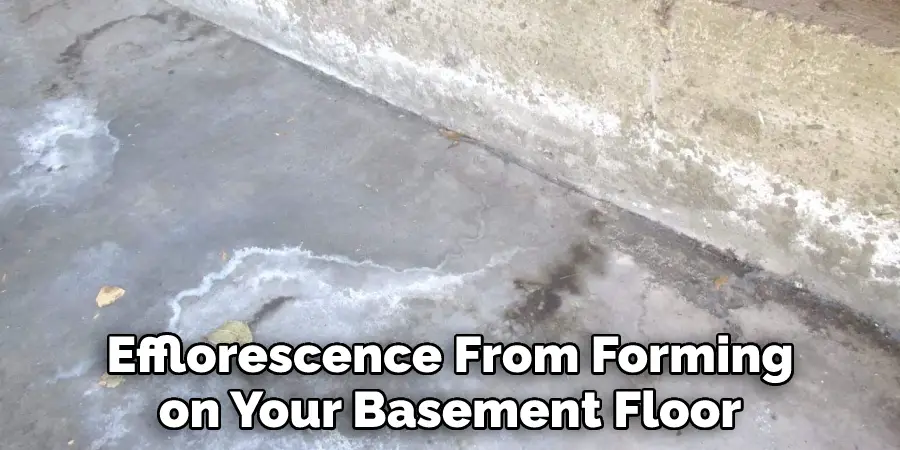
To prevent efflorescence from forming on your basement floor, you should make sure gutters and downspouts are in working order and free of debris, seal cracks or gaps in the concrete, fix any leaking pipes or plumbing fixtures, and ensure proper ventilation. Additionally, you may want to install a dehumidifier or interior waterproofing system in the basement if appropriate.
Can I Paint Over the Efflorescence on My Basement Floor?
In most cases, painting over efflorescence is not recommended as it can trap moisture underneath the paint and lead to further damage. It’s better first to identify the source of moisture and fix it, then clean the surface with an acidic solution, such as vinegar or oxygen bleach, before painting. Additionally, you may want to install a dehumidifier in the basement to help reduce humidity levels and discourage efflorescence growth.
What Other Solutions Do I Have For Dealing With Efflorescence on My Basement Floor?
If the tips above don’t stop efflorescence from forming, you may need to call a professional who can diagnose the problem and recommend solutions. This could include installing a drainage system, repairing cracks and leaks, or applying waterproofing solutions. It’s important to take action as soon as possible to avoid more serious damage from occurring, and these steps can help ensure your basement floor remains in good condition for many years to come.
Do I Need Professional Help to Stop Efflorescence on Basement Floor?
In some cases, it may be best to call in a professional for help with stopping efflorescence on your basement floor. A professional can diagnose the source of moisture and suggest more permanent solutions, such as installing a drainage system or applying waterproofing solutions. It’s important to take action soon to avoid more serious damage from occurring, and a professional can help ensure your basement floor remains in good condition for years to come.
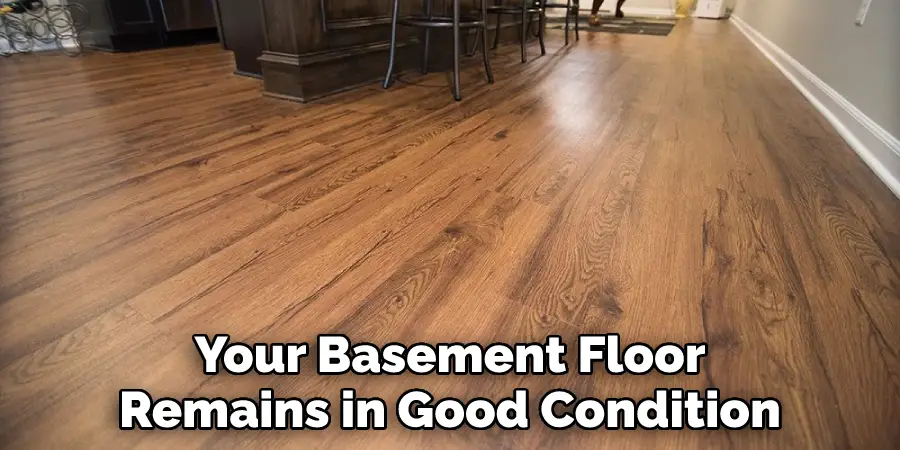
Conclusion
Knowing how to stop efflorescence on basement floor is important for keeping your home safe and healthy. It’s essential to identify the source of moisture and fix it as soon as possible. After that, you can clean the surface with an acidic solution, such as vinegar or oxygen bleach, before painting. If these measures fail, professional help may be required in order to diagnose and solve the problem. Taking action in a timely manner can help avoid serious damage and ensure your basement floor remains in good condition for many years to come.

